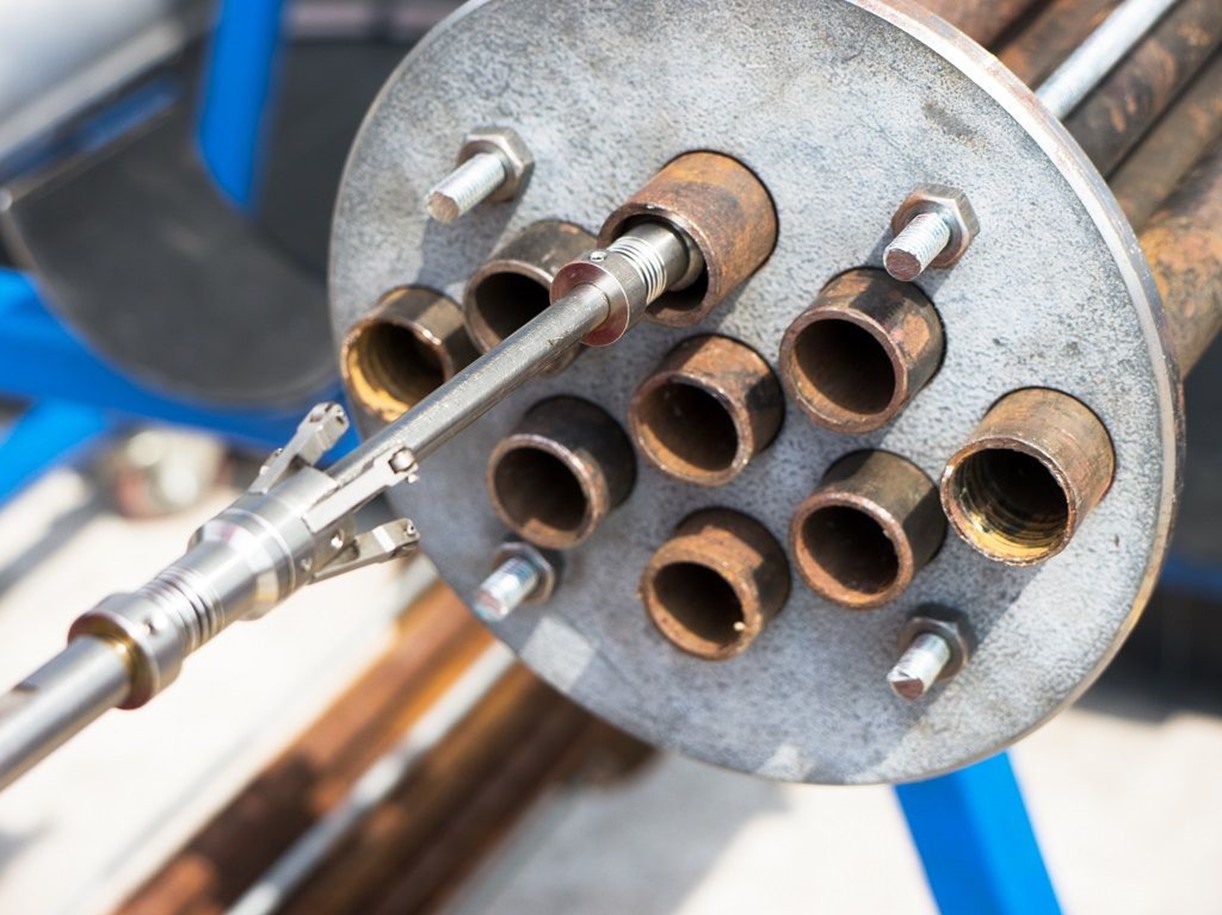
The Internal Rotary Inspection System (IRIS) is an ultrasonic non-destructive testing (NDT) technique used to inspect the condition of pipes and tubes. It provides accurate measurements of wall thickness and can detect various types of defects, making it a valuable tool for ensuring the integrity of critical equipment.
How does IRIS work?
IRIS employs an ultrasonic probe that is inserted into a liquid-filled tube. The probe uses a rotating mirror to direct ultrasonic waves into the tube wall.
- Probe Insertion and Water Filling: The IRIS probe is inserted into the tube, which is filled with water. Water acts as a couplant, facilitating the transmission of ultrasonic waves.
- Ultrasonic Wave Transmission: The probe’s transducer generates ultrasonic pulses that travel parallel to the tube’s axis.
- Rotating Mirror: A rotating mirror within the probe directs the ultrasonic beam into the tube wall.
- Wall Thickness Measurement: The ultrasonic waves are reflected by both the inner and outer surfaces of the tube wall. By measuring the time difference between these reflections, the IRIS system accurately determines the tube’s wall thickness.
- Helical Scan: As the probe is pulled through the tube, the rotating mirror creates a helical scan pattern, providing complete coverage of the tube’s inner surface.
Applications of IRIS
IRIS is used across various industries for inspecting tubes in:
- Heat exchangers
- Boilers
- Condensers
- Air coolers
- Pipelines
Advantages of IRIS
- Accurate Wall Thickness Measurement: IRIS provides precise measurements of remaining wall thickness.
- Detection of Internal and External Defects: IRIS can detect defects on both the inner and outer surfaces of the tube.
- Versatile Material Compatibility: IRIS can be used on various materials, including ferrous, non-ferrous, and even some non-metallic materials.
- Quantitative Results: IRIS provides detailed information about the geometry and extent of defects.
Limitations of IRIS
- Requires Water Filling: The tube under inspection must be filled with water, which can be challenging in some situations.
- Tube Cleanliness: The tube’s inner surface must be clean to ensure accurate results.
- Slow Inspection Speed: IRIS inspections can be slower compared to some other methods.
Complexity: IRIS equipment and data interpretation can be more complex, requiring skilled operators.
